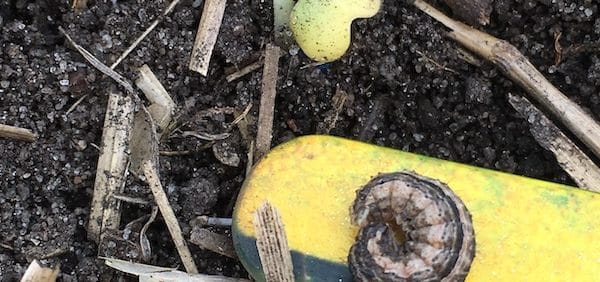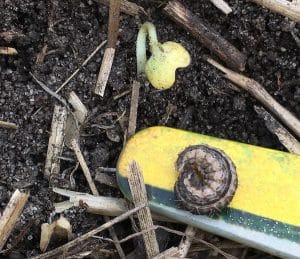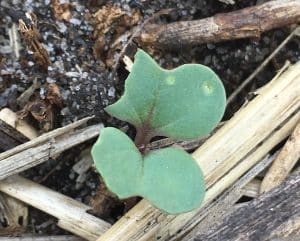Flea beetles. Seed treatments are an effective integrated pest management strategy for flea beetles. But in situation where the crop establishes slowly and conditions are well suited to high flea beetle activity (warm and dry), in-crop foliar applications may be required to protect the crop from profit loss. The key is to know the thresholds, scout closely and make the right economic decision for each field.
The Canola Encyclopedia has good information on thresholds and the eight steps to help agronomists and canola farmers decide whether a foliar spray is needed.
Cutworms. Cutworm feeding results in notched, wilted, dead or cut-off plants. Patches of missing plants could also be cutworms. Include cutworms on the scouting checklist for the first one to three weeks after emergence. Scout late in the day or extremely early in the morning to look for above-ground feeding cutworms. During the day, cutworms usually go back underground. If cutworms are suspected but scouting is a challenge, consider going out in the evening with the backpack sprayer and proper protective equipment to spray a small area around the border of the patch. Check back in the morning to look for cutworms on the soil surface.
The Canola Encyclopedia has scouting techniques for cutworms.
With the beginning on scouting season, you’ll want to restock your scouting toolkit.



